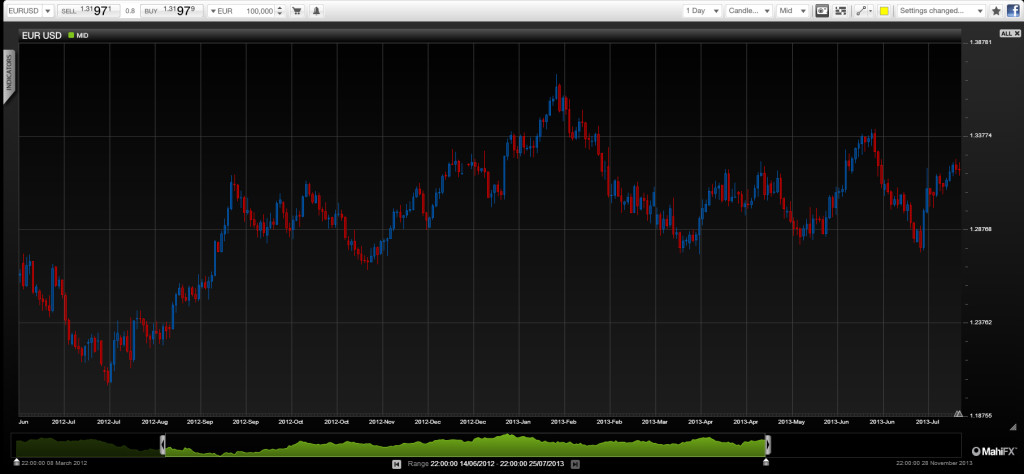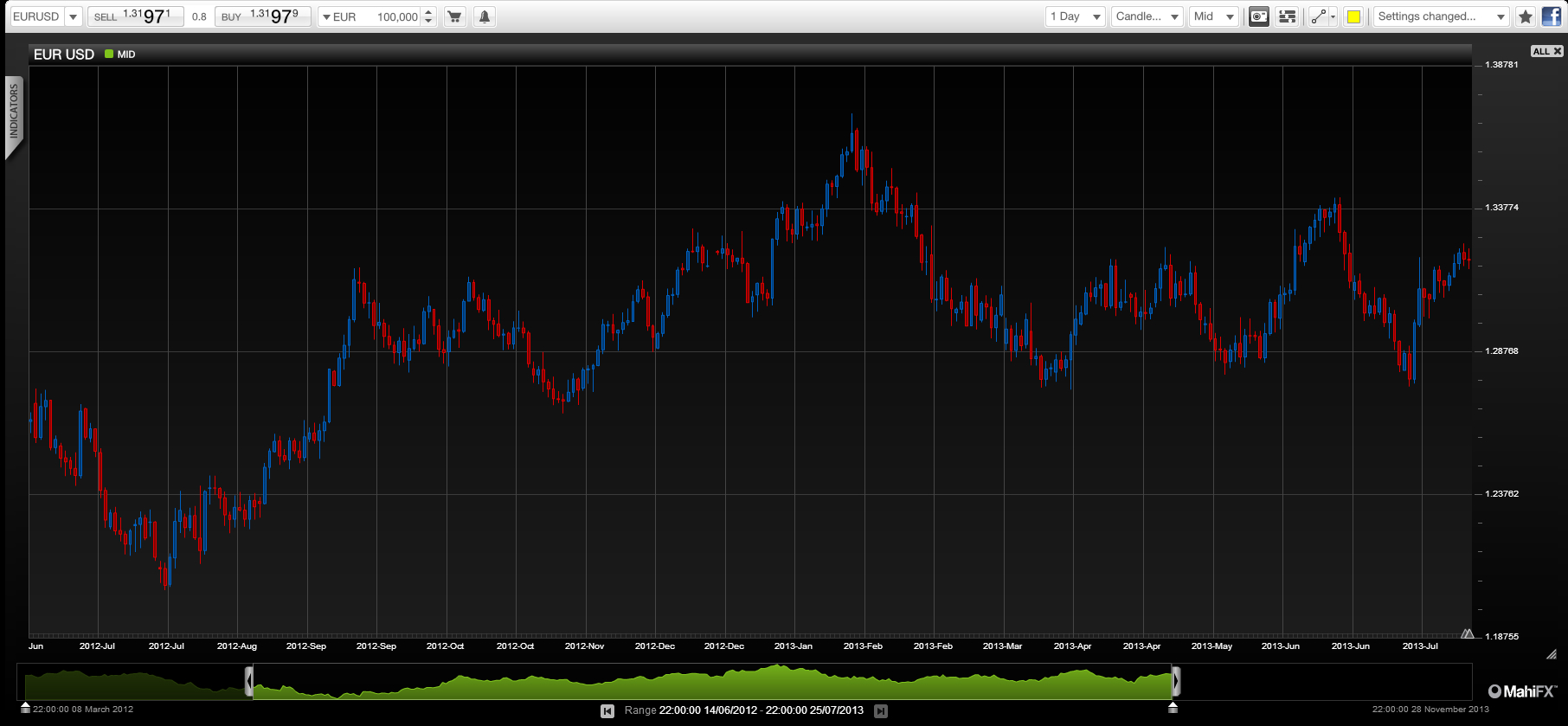While volatility levels have been dropping in forex markets recently fault lines in the Eurozone have been deepening, which could see the Euro under pressure come September when institutional investors return to their desks and re-evaluate Eurozone asset markets.
Asset markets have generally been soothed by comments supporting economic growth from the US Federal Reserve, European Central Bank and China’s leadership. For instance, yields on Italian and Spanish government bonds have tightened. However, the situation in the Eurozone remains deeply troubling and could soon result in another round of volatility, which would be negative for EUR/USD.
By Justin Pugsley, Markets Analyst MahiFX. Follow MahiFX on twitter at: https://twitter.com/MahiFX
Earlier this week it was reported that the Eurozone’s debt to GDP ratio had hit 92.2% in the first quarter of 2013, up from 88.2% a year earlier with total debt standing at a record Euro 8.75tn. Especially worrying is that the largest rises in debt came from Spain, Greece, Portugal and Eire – all countries at the epicentre of the Eurozone’s debt crisis.
Another negative for the Eurozone is that rather than addressing systemic weakness during the current breather, policy makers have instead been backsliding. Nowhere near enough progress has been made in creating a banking or fiscal union, which would go a long way to stemming contagion effects and reassuring the markets.
Institutional investors are likely to find these factors troubling and could decide that peripheral Eurozone bonds are not worth the risk. Historically, a blow out in peripheral Eurozone yields has led to sell-offs in the EUR/USD.
EUR/USD could again test support at 1.30 and 1.28 after September

…but there are some positives
But there are two positives, which should stop an outburst in volatility turning into an outright crisis – at least for the time being. In the short-term, there’s the ECB’s Outright Monetary Transactions programme designed to support sovereign bond markets of struggling Eurozone countries if needed. The mere mention of OMT has proved a powerful tonic for peripheral bond markets.
The second point is that signs of an economic recovery could start to come through in some of those peripheral Eurozone countries later this year. Longer term it is exactly what’s needed to see improvements in credit ratings and reductions in debt to GDP ratios. It’s the sort of progress, which would gradually see closure for the Eurozone crisis.
Ultimately, the Eurozone faces the stark choice of fully integrating into something resembling a nation state like the US with fiscal transfer mechanisms and returning to growth or breaking up. However, going by previous form the Eurozone only makes those reforms under duress, such as when it is under the threat of breaking up, therefore more rounds of the Eurozone crises seem inevitable.
